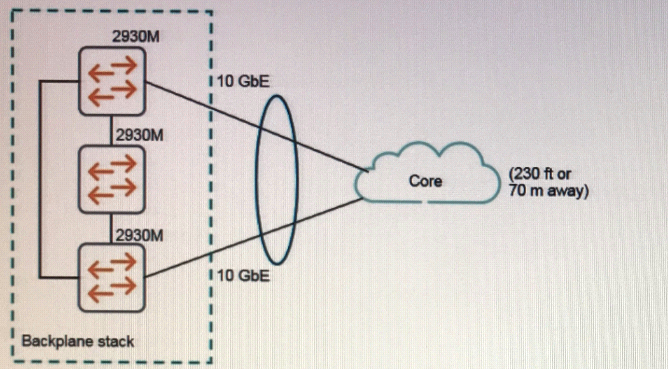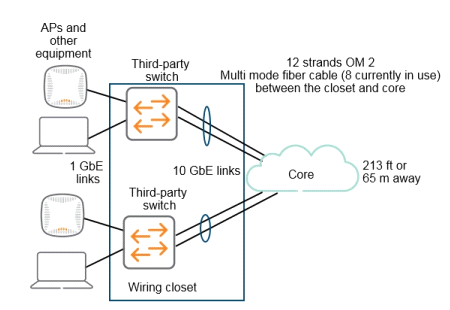HP Designing Aruba Solutions HPE6-A47 Exam Practice Test
An AP 105 was converted into a RAP. The RAP can authenticate its IPSec tunnel to a controller using which of the following methods? (Choose two.)
Answer : D, E
Which of the following describes a Remote AP provisioned in "Split-Tunnel" Forwarding mode?.
Answer : D
A customer has several clusters of Aruba 325 Instant APs. The customer is happy with the performance of the
current APs, but would like to add a Mobility Controller (MC). What should the architect propose?
Answer : D
The corporation has deployed hundreds of RAP3 and all are working. A user has received a RAP3 from the IT department. At his home he connects the Ethernet port to his DSL modem. The corporate SSID is not advertises but an Instant SSID is. What could be the problem?
Answer : B
Refer to the exhibit.
Exhibit 1.

Exhibit 2.

Exhibit 1 shows the logical plan, and Exhibit 2 shows the BOM that the administrator has made in Iris. What is
missing from the IRIS BOM?
Answer : C
Refer to the exhibit.

The exhibit shows information about a customer's existing equipment in a closet. The customer needs an upgrade for this closet. The architect plans to:
Replace the switches with two Aruba 3810M switches
Connect the 3810M switches in a backplane stack
Upgrade the uplinks to two 40GbE links for the entire backplane stack
What is required for this design?
Answer : A
Read this scenario thoroughly, and then answer each that displays on the right side of the screen.
An architect proposes these products for a customer who wants a wireless and wired upgrade:
1. Aruba 2930M switches at the access layer
2. Aruba 5406R switches at the core
3. Aruba AP-325s
4. Aruba 7205 Mobility Controllers (MCs), deployed in a cluster
5. Aruba Mobility Master (MM)
6. Aruba ClearPass Cx000V
7. Aruba AirWare
The architect also needs to propose a security plan for the solution. The customer has 900 employees and up
to 30 guests a day. The customer wants to protect the internal perimeter of the network with authentication and
simple access controls. The customer is most concerned about wireless security, but also wants to ensure that
only trusted users connect on the wire. However, the customer also wants all wired traffic to be forwarded
locally on access layer switches. The customer already has a third-party firewall that protects the data center.
The customer wants to use certificates to authenticate user devices, but is concerned about the complexity of
deploying the solution. The architect should recommend a way to simplify. For the most part users connect
company-issued laptops to the network. However, users can bring their own devices and connect them to the
network. The customer does not know how many devices each user will connect, but expects about two or
three per-user. DHCP logs indicate that the network supports a maximum of 2800 devices.
Refer to the provided scenario. Based on the plan for wired authentication, what is a correct plan for wired user
VLANs?
Answer : C